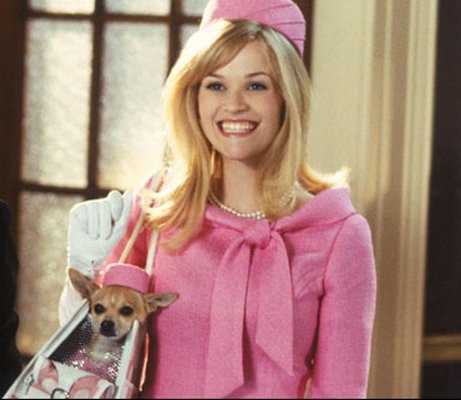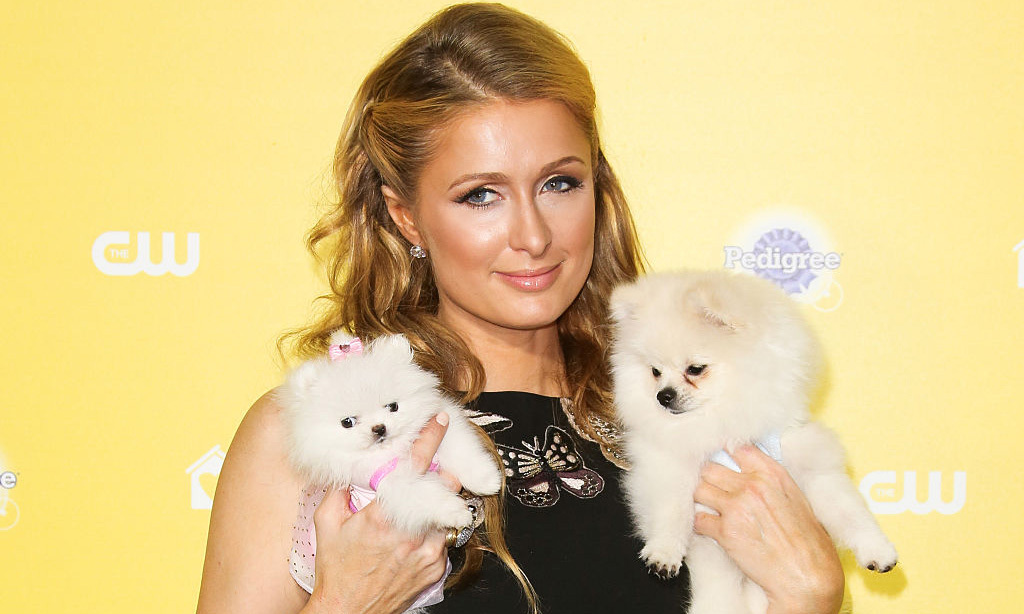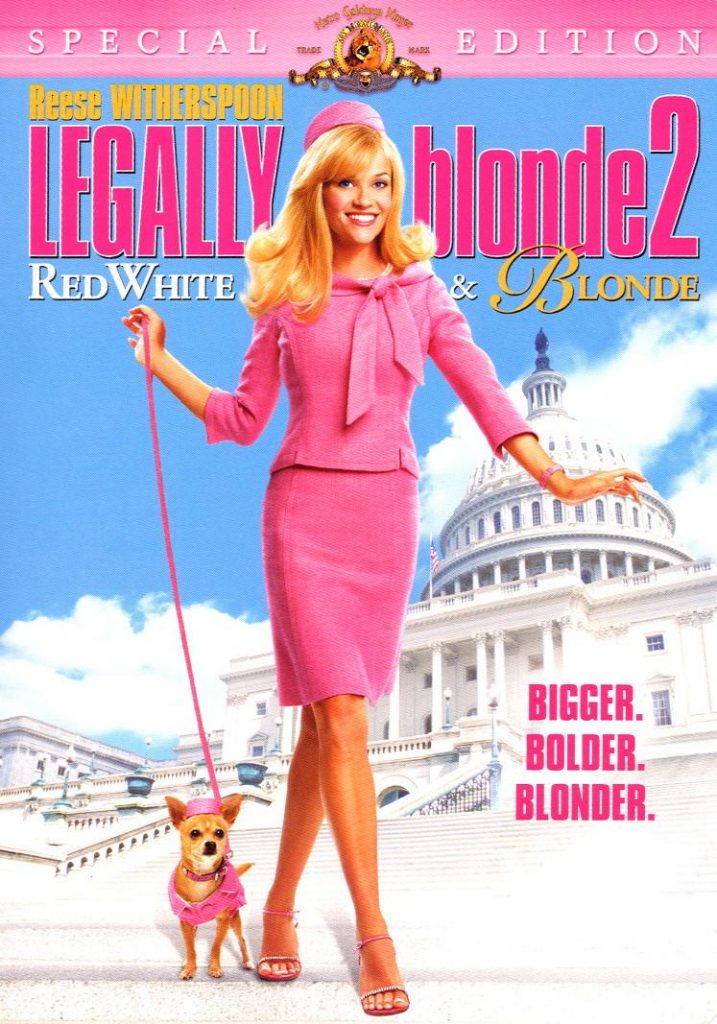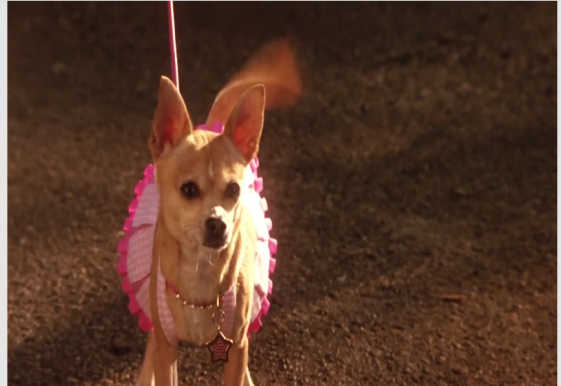Legally Blonde 2 attempts to interrogate the controversial issue of animal testing in a comedic domain. Although the realm of comedy is potentially limiting, due to its farcical and flippant nature, Herman-Wurmfield uses humour to expose issues in animal experimentation through his protagonist, Elle Woods. Elle realises her beloved pet Chihuahua Bruiser’s mother is trapped in a cosmetic testing facility. She uses her position as a lawyer to give a ‘voice to others to those that cannot speak for themselves’ [1]. In order to challenge US laws on animal testing Elle travels to Washington and embarks on a journey to give her cherished animal agency.
The comedy arises from a sense of irony, as Elle is challenging human treatment of animals in the realm of experimentation for cosmetics. However, Elle seems to diminish Bruiser’s individual autonomy by carrying him around in her designer handbags and parading him around Washington in a leotard and tutu. Bruiser appears to be a commodity and a feature of materialistic value for Elle, rather than an animal with agency. The presentation of Bruiser subverts expectations of the human/animal binary as Elle is humanising her pet dog by assigning him her personality traits and aesthetics. This humanisation of a domestic pet could be considered animal cruelty as Bruiser is objectified by his owner and his own instinctually animal agency is destabilised. However, the film treats such conduct of animals flippantly. Elle’s treatment of Bruiser is viewed as endearing rather than damaging. By putting a Chihuahua in pink tutu he comes undeniably cute, generating an ‘aw factor’ from the audience. Herman-Wurmfield distracts the audience with a cute aesthetic to ensure that we do not criticise Elle’s negative treatment of animals and focus primarily on her positive pursuit for animal rights.
The film uses animals as a vehicle to interrogate presentations of gender and sexuality. In doing so, the film exposes controversial attitudes towards LGBT groups and society’s expectation of heteronormative behaviour. As Elle walks Bruiser through the park he wears a pink tutu and leotard, Elle has generated a feminine personality for her dog that emulates her own love for pink, perhaps destabilising Bruiser’s animalism. Here Bruiser is comparable to a drag queen, his cross-dressing tendencies challenge our expectations of a male dog. Bruiser represents a confident dog who doesn’t need to comply with societal norms, his clothing choices allow him to express his personality, much like drag. The film then juxtaposes this image against Stan’s muscular black Rottweiler, epitomising masculine stereotypes. The dogs represent two very contrasting homosexual archetypes, an overtly camp and effeminate male contrasted with a butch, overtly muscular male. The two dogs show a mutual attraction as Bruiser struggles to walk away from Leslie. Romantic music plays as the two gaze into each other’s eyes using a series of shot-reverse-shot, zooming in on the pets loving eyes against the backdrop of a park, ultimately providing a romanticised mise-en-scene. Their large ‘puppy eyes’ express their attraction to one another, generating an ‘aw’ response from the audience. This endearing presentation of puppy love invites the audience to invest in the animals’ unexpected relationship.
The scene moves on to the ‘Puppy Parlour’ where Elle and Stan both receive emergency calls concerning their dogs. The receptionist informs the two that Bruiser and Leslie are gay and attracted to each other. This scene is humorous as despite the dog’s obvious homoerotic behaviour in the park their owners had no idea that their dogs were gay. This concept exposes certain homophobic attitudes towards the dogs, in a tongue in cheek manner. Both Elle and Stan open their mouths in shock and a young woman dramatically grabs her dog and removes him from the situation in horror, as though homosexuality is contagious. The audience finds comedy in their over the top reaction to the seemingly obvious news. However, there is arguably a dark irony running throughout the scene. The film uses pets to comment on society’s prejudiced attitudes towards sexuality as Stan appears to be initially disappointed and reject his dog for being homosexual. The film is exposing negative and controversial attitudes towards the LGBT community and projecting these responses into the animal realm. Herman-Wurmfield successfully challenges these attitudes by parodying homophobic responses, by means of hyperbolising their over-dramatic pastiche the director undermines their force and affect, thereby promoting equality and criticising homophobia.
[1] Herman-Wurmfield, Charles (2003) Legally Blonde 2: Red, White and Blonde
[2] Image of Paris Hilton http://us.hellomagazine.com/celebrities/12016061015093/paris-hilton-s-incredible-dog-mansion-has-to-be-seen-to-be-believed, Heat Magazine, 2016 [accessed 09.01.2017]




